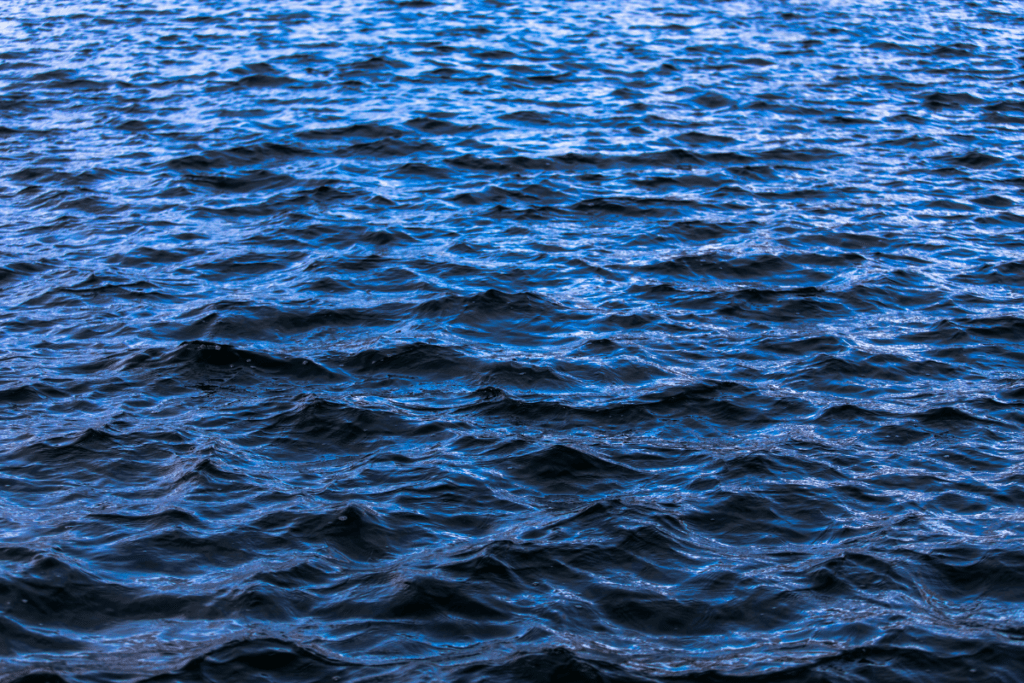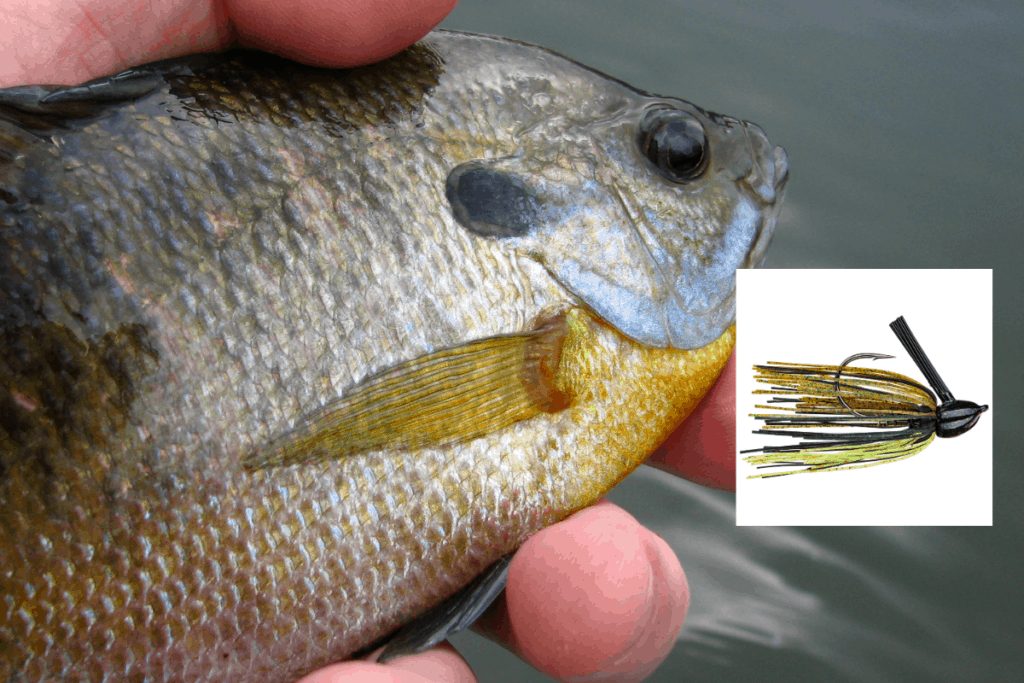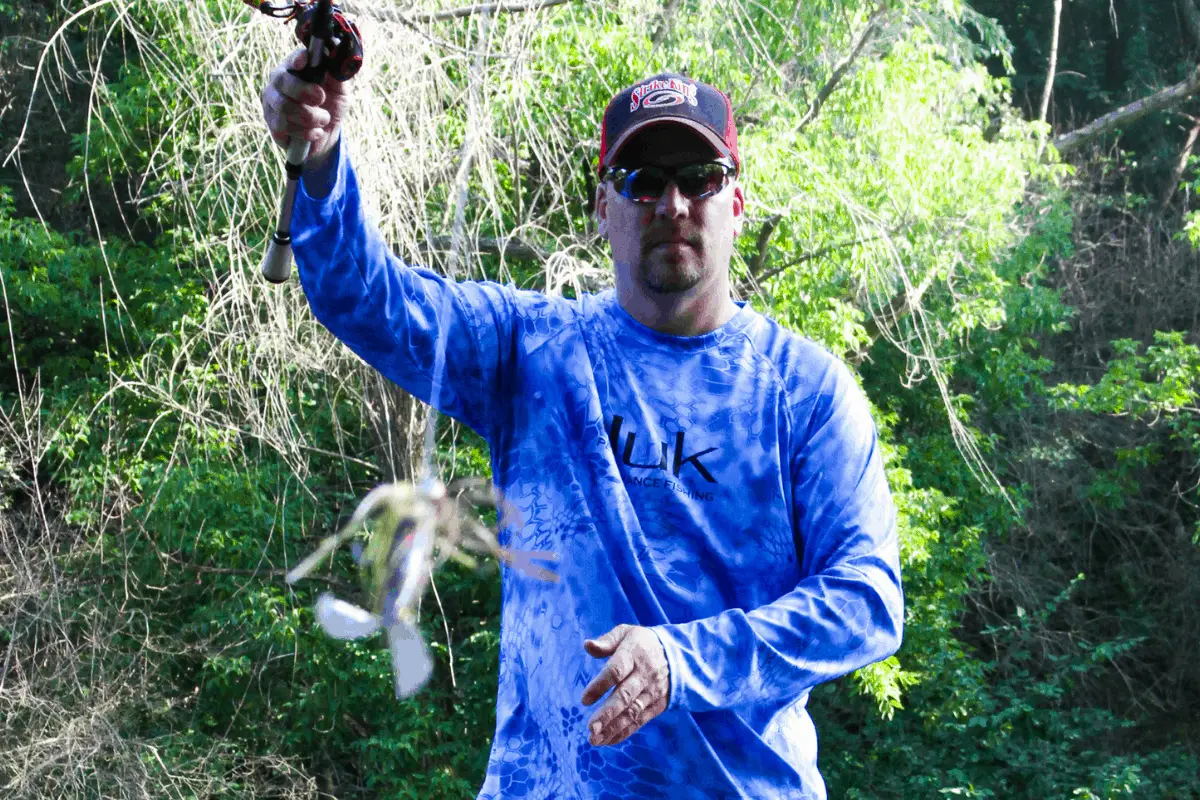Like most sports, bass fishing is a pursuit reliant on experience, tips, and tricks. The longer one participates the more apt an angler is to adjust to conditions and make decisions on the water that yield success.
Every bass angler needs to understand these five aspects of bass fishing: bass use cover, the wind is your friend, weather changes everything, match the forage, and keep learning. Once you keep these aspects of the sport at the forefront of your thought process the odds of having a great day on the water turn to your favor.
In this article, I will break down each of these areas in detail.
Bass Use Cover
There are species of fish that hang in open water. Bass do not fall into that category. Yes, there are times when largemouth and smallmouth can be found hanging under large schools of shad in the middle of a lake, but 99% of the time, these predators are lurking near cover.
The first thing we need to discuss is the difference between the terms “cover” and “structure.”
Structure refers to bottom composition. Cover is the stuff that is found on that structure. A brush pile sitting on a rocky point would be a great example of cover on structure.
Typical types of cover that bass utilize include: wood, vegetation, and docks. Each of these categories come in a variety of shapes and forms.
Find the Spot within the Spot
Once a type of cover has been located, an angler needs to find the irregularities within that cover. A giant weedbed does not mean the entire thing will be packed with bass. Look for the unique characteristics within that cover.
Are there pockets within that weedbed? Are there places where weeds and the wood intersect? Did you check the outside and inside edge? Is there a portion of the weedbed that is near deeper water?
Finding those places are key to not only finding fish, but it may be the key to catching a giant as well as numbers.
I have fished plastic frogs on the Mississippi River targeting a pocket in a reed line that was smaller than a loveseat. We caught about fifteen bass out of that little spot, including several where all three anglers in the boat had one on at the same time. That spot-within-a-spot would have been easy to pass up because was so small, yet is provided memories I will never forget.

The Wind is Your Friend When Bass Fishing
On any given windy day, the majority of anglers will avoid the wind. Understandably so. If makes boat control difficult, casting is much more problematic and feeling what is transpiring at the end of your line can seem like guesswork. I get it.
Still, anglers need to fish the wind.
The wind is responsible for a couple of key factors that can put the odds in your favor. First, it gets the food chain fired up.
Small microorganisms, like zooplankton, get kicked up with the wind-generated waves. The smallest of creatures, like minnows and crawfish, will feed on this zooplankton. Therefore, larger predators, will now actively turn on the feedbag.
Fishing on a windblown bank can result in ferocious strikes because the bass in the area are not sitting, but actively roaming and looking to gorge themselves.
The wind also disguises our movements. The chop on the water lets us get closer to cover, move around without being so obvious, and shield the fish from getting a good look at the shadows we cast.
How to Best Utilize the Wind
If you are fishing from a boat, always point the bow into the wind. This positioning will make boat control easier and keep you from fishing too fast. It may put a strain on your batteries, but with the proper setup, you can fish into the wind all day without trouble. (Here is an article about boat battery maintenance.)
If it is possible in the area you are fishing, I love to parallel the shoreline. The bass are usually going to be shallow and fishing like this keeps the bait in the strike zone much longer. The really is only one downside. It can be tough for an angler in the back of the boat to make casts to key areas.
Now is the time to use baits that are heavier and also work in a horizontal presentation. Spinnerbaits, crankbaits, jerkbaits and swim jigs are all excellent choices when paralleling banks on windy days.
If you are fishing a riprap shoreline that is really getting pounded with waves, crawfish will be sucked from their rocky hangouts because of the sloshing water. Heavy jigs can be effective here as well.
Weather Changes Everything
Finding several consistent weather days is difficult. Like us, the fish change their behaviors based on weather conditions.
As a general rule, cloudy and overcast conditions will find fish more likely to be out and “roaming.” In essence, they will not hold as tight to shady cover. When the sun is beating down, the bass are going to do one of two things: move into the shade or go deeper to avoid the harsh sunlight.
This shade may be in the form of an overhanging dock or it could be provided by thick vegetation. Find where bass can feel protected from the sun and you will be in a good place to start investigating.
Pressure Changes
Barometric pressure on these cloudy and sunny days can give us a clue where to start.
When that pressure is high, like on a bright, sunny, cloudless day, the microorganisms are pushed to the bottom because the barometric pressure is holding them there. The food chain is going to be most active on the bottom because of this. Baits that present along the bottom are going to be effective options on high-pressure days.
When the barometric pressure is low, like on overcast days, the food chain will move up in the water column and more traditional horizontal baits and presentations are excellent selections.
There are exceptions to this simple guideline, but I find that it points to a good starting place and then I can adjust.

Match the Forage to Catch Bass
Anglers for many decades have known that if you accurately match what the fish are eating you are more likely to get a bite. It is true.
What is the primary forage in the water you are fishing? Are there sunfish? Are there shad? What type of shad – gizzard or threadfin?
All of these questions are pertinent to help an angler identify where to start. For example, gizzard shad grow much larger than threadfin shad. The sunfish family has a wide range of color variations. Which type are in the water you fish?
What is the coloration of the crawfish in your water? Have they just finished the breeding season, which happens when the water temp is around 50°? If so, they will be brighter shades of red or orange. If not, they will still be colored in browns and greens.
Be observant as you are fishing. Making slight changes to your lures so they appear natural to the water you are investigating can be the difference between a few bites and and a day for the record books.
Keep Learning
My favorite part of bass fishing is that it is a sport where the older you get the more knowledge you amass.
Ask questions, watch YouTube, find new people to fish with, and experiment often. Techniques and lures that I used fifteen years ago still catch bass and new techniques I learned six months ago also can hammer them.
There are so many options out there to catch these amazing fish.
Be safe, take a kid fishing, and remember to encourage someone today, you never know how you might just change their life forever.

